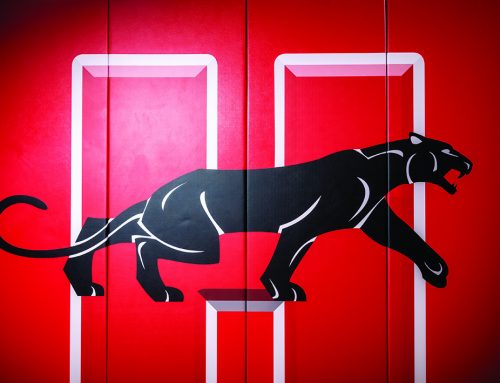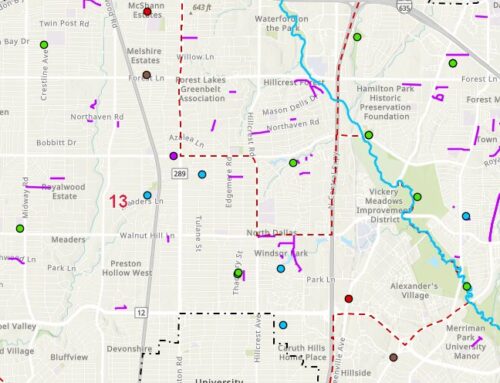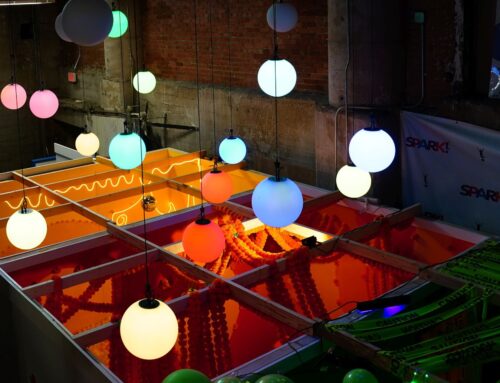Two interesting things to note on the area development/economic front:
One, the 7-Eleven store at Knox & Travis — one of the chain’s early stores — is closed and the site could become a 9-story-20,000-square-foot office/retail building, which apparently would be allowed under existing zoning, according to the DMN. The store is across the street from the Highland Park Pharmacy and near the Katy Trail, but it’s not typically the type of site that has a nine-story building on it — too much density on a small site, in other words.
Two, DMN columnist Rod Dreher sticks his toe in the density fray by advocating "localism", which in his mind means chaning zoning restrictions to allow "small retailing" in the middle of existing residential areas (a small grocer to cut down on trips to the mega-store miles away), zoning boosts to allow "local farming" including "discouraging the use of arable land for development", and expanding the availability of ultra-high-speed internet access through governement investing/subsidy (allowing companies to decentralize their workforces) and encouraging people to cluster together to achieve energy savings. Dreher is a little on the grape-nuts side of the fence with his conclusions, but his thought process is going in the right direction.
Both comments point to the same thing: Higher density in Dallas and in our neighborhoods will ultimately be the solution we pick to deal with permanently higher fuel and commodity prices. We may not like it, at first, and I can guarantee that some of us will not go down without a fight, but we’ll be seeing it happen here. As a result, we’ll be stacked a little more tightly together in certain commercial and entertainment zones, which will be nearer to neighborhoods. It’s not like Dallas is going to turn into New York, where we’ll just walk out our door and lo and behold a local grocer and dry cleaners and restaurant are going to be right there. But that is the plan downtown already, and it’s going to happen here in our neighborhood.
What’s happening at Walnut Hill and Central will be a good example of how this is handled here in Preston Hollow, which is already ahead of the curve due to the number of vibrant neighborhood retail/commercial nodes (Preston-Royal, Preston Forest, Preston Center come to mind). Expect some rezoning requests from those property owners, seeking to add more mid-rise office buildings to the mix in an effort to build the 24/7 appeal of the centers and the ability for neighborhood residents to cut our commuting time by living closer to home.
One more thing: White Rock Lake in neighboring East Dallas/Lakewood will be in play.
The lake has been turned into a true city amenity over the years, thanks to the efforts of both neighborhood volunteers and great work from the city park and rec department. That will make development around the lake a natural outgrowth of the density movement — people will want to live closer to recreation. If I may be so bold as to make a prediction: Within 15 years, Garland Road will be unrecognizable from what it is now. It’s close to downtown, close to the lake, close to the Arboretum and close to retail and commercial areas. The land is relatively inexpensive. And people will want to live and work there.
What’s happening at Knox & Travis will be happening on Garland Road, too; it will start in two to three years, when the economy and the real estate market recover from this little dip in the road we’re experiencing right now. In 15 years, we’ll be driving through our own little steel and concrete canyon while traveling between the lake and Casa Linda.






